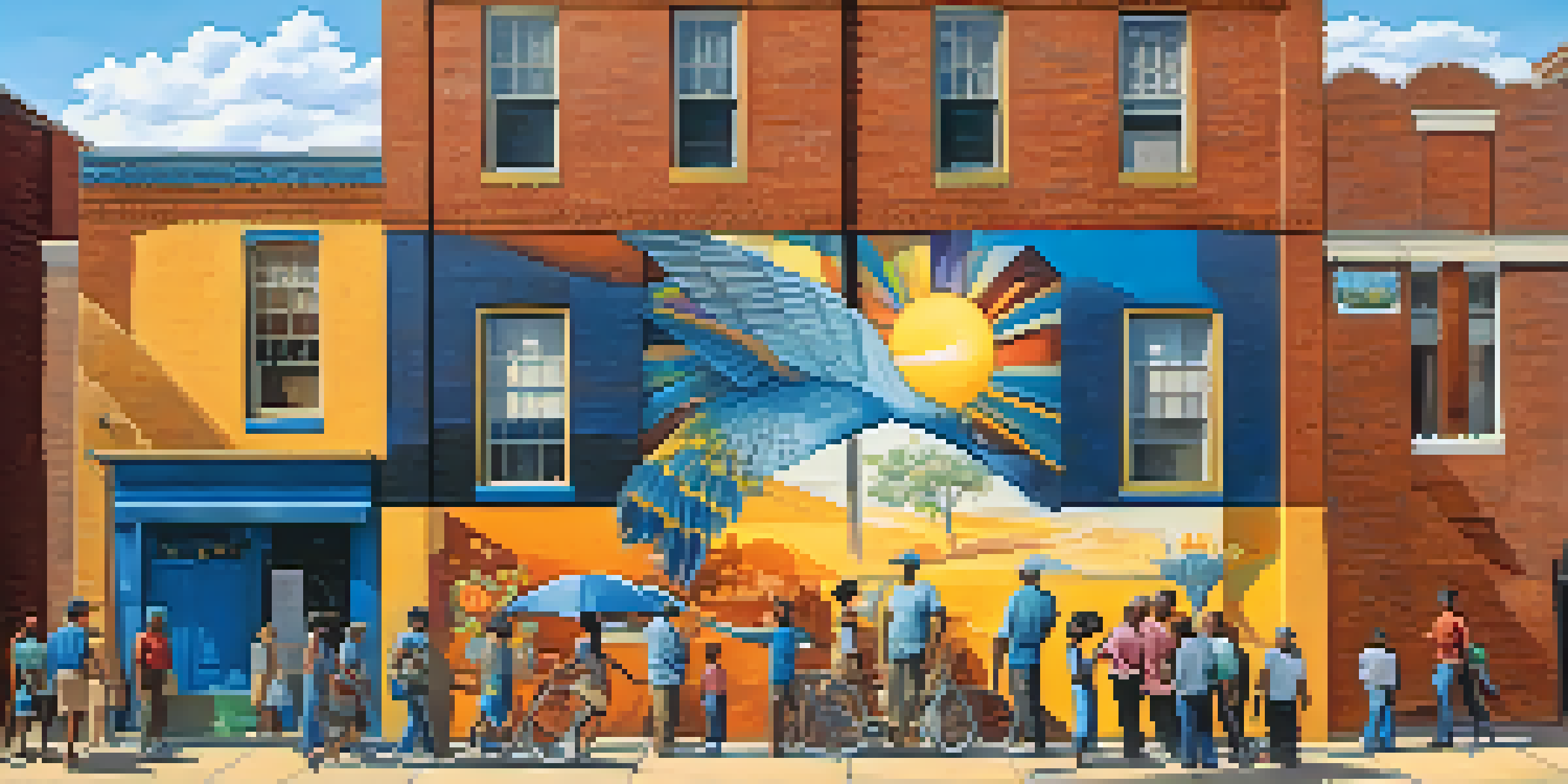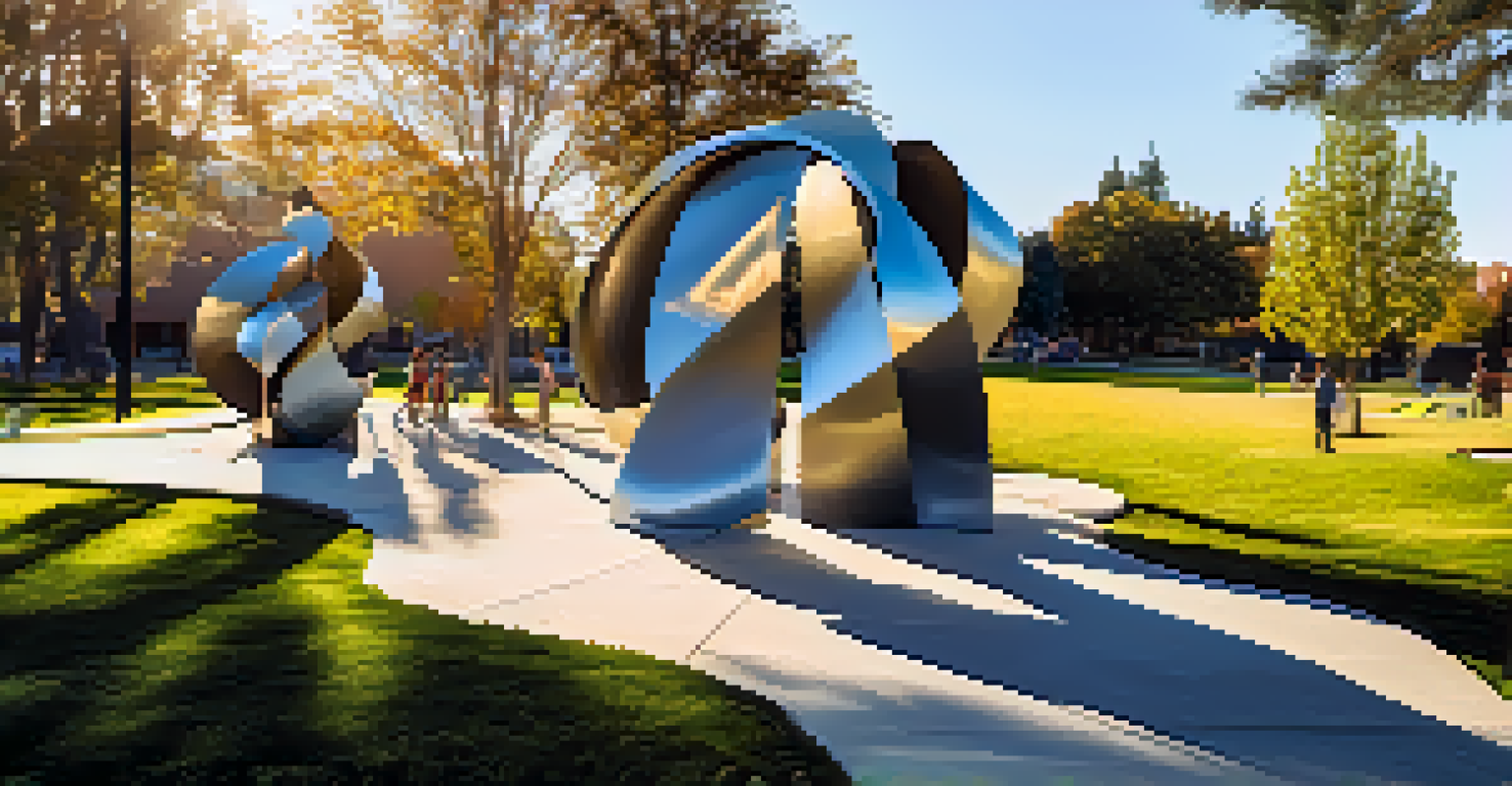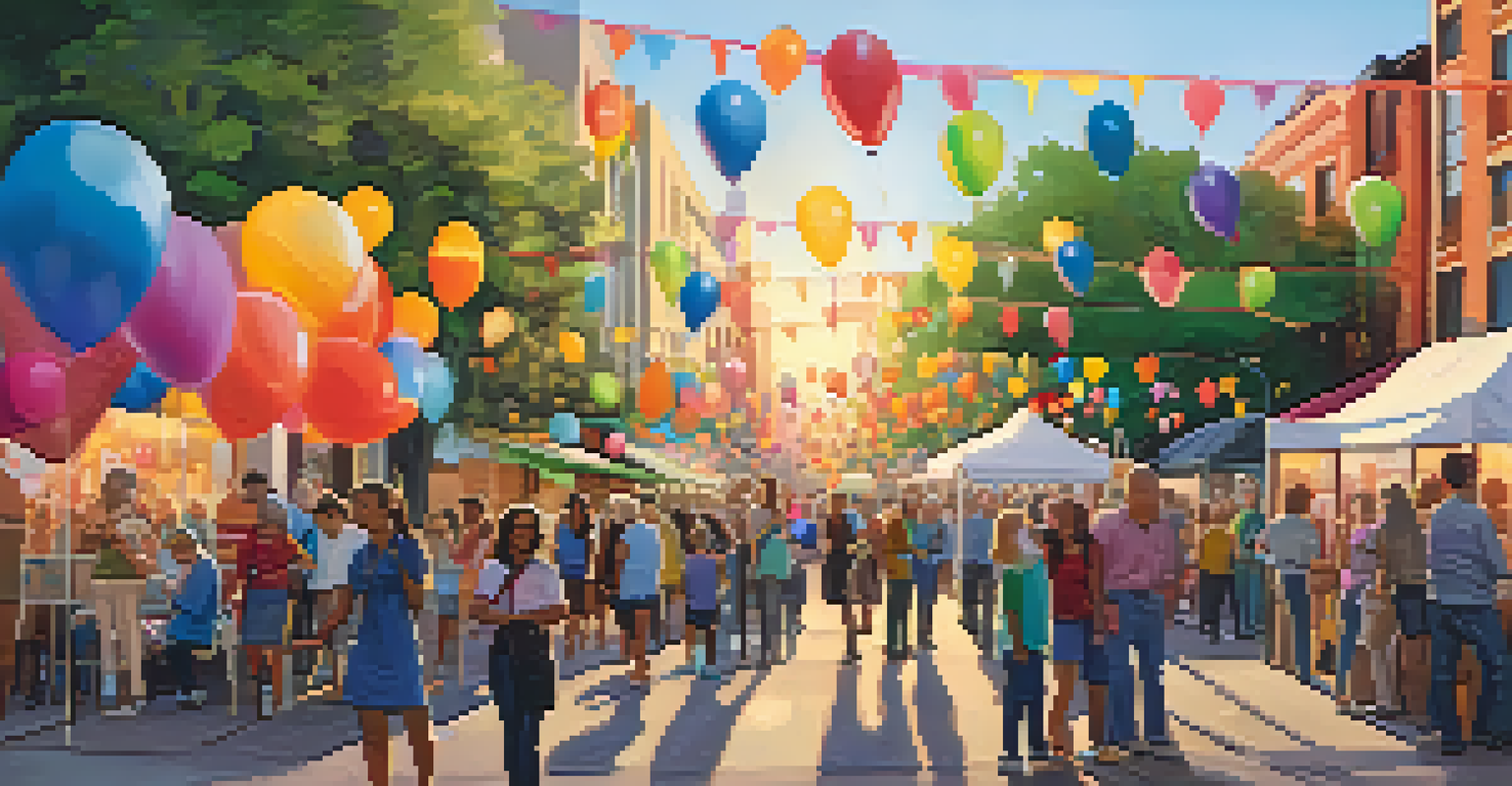Community Engagement Through Public Art: A Vital Connection

Understanding the Role of Public Art in Communities
Public art serves as a visual representation of a community’s identity and values. It can range from sculptures and murals to installations that invite interaction. By showcasing local culture and history, public art becomes a mirror reflecting the community’s spirit.
Art enables us to find ourselves and lose ourselves at the same time.
Communities often use public art to tell their unique stories, making it an essential tool for cultural expression. This not only enhances the aesthetic appeal of public spaces but also encourages residents to take pride in their surroundings. Art can spark conversations and connections among community members.
Moreover, public art initiatives often involve local artists, which helps to support the creative economy. By engaging local talent, communities foster an environment where creativity thrives, ultimately leading to increased community cohesion and collaboration.
Creating a Sense of Belonging Through Art
Art can be a powerful catalyst for fostering a sense of belonging among community members. When people see their stories represented in public artworks, they feel more connected to their surroundings. This connection can bridge gaps between diverse groups, uniting them under a common narrative.

For example, a mural depicting local landmarks or historical events can resonate deeply with residents, evoking nostalgia and pride. Such artworks remind individuals of shared experiences and cultural heritage, reinforcing their sense of belonging.
Public Art Enhances Community Identity
Public art serves as a visual representation of a community’s culture and values, fostering pride and connection among residents.
Additionally, interactive public art projects encourage active participation, allowing individuals to contribute to the creation process. When community members collaborate on art installations, they build relationships and strengthen their ties to each other and their environment.
Public Art as a Tool for Civic Engagement
Public art can serve as a platform for civic engagement, prompting discussions about community issues and aspirations. Art installations can address social topics like diversity, sustainability, and inclusivity, opening avenues for dialogue among residents. When art reflects these themes, it encourages community members to engage in conversations that matter.
Public art is a way to create a sense of place, a sense of community, and a sense of belonging.
For instance, a public art piece that comments on environmental issues may inspire community clean-up events or sustainability initiatives. By using art to highlight pressing concerns, communities can galvanize action and foster collective responsibility.
Moreover, public art projects often invite input from residents, allowing them to voice their opinions and ideas. This participatory approach not only enhances the artwork but also empowers individuals to take ownership of their community's future.
The Economic Impact of Public Art Initiatives
Investing in public art can have significant economic benefits for communities. Vibrant public art can attract tourists and increase foot traffic, leading to greater business opportunities for local vendors. When people are drawn to an area because of its artistic offerings, everyone benefits economically.
For example, cities known for their public art, like Philadelphia and Chicago, have seen spikes in tourism and local spending as a result of their creative initiatives. Art festivals and events centered around public installations can also generate revenue and create jobs.
Art Sparks Civic Engagement
Public art initiatives often prompt discussions about important community issues, encouraging residents to engage actively in civic matters.
Moreover, public art can enhance property values in the surrounding areas. When neighborhoods embrace art, they become more desirable places to live, thus attracting new residents and businesses. This ripple effect underscores the importance of public art in fostering economic growth.
Fostering Community Identity Through Shared Art Experiences
Public art creates opportunities for shared experiences that help shape community identity. Events like art walks or mural unveilings bring residents together, allowing them to celebrate their local culture. These gatherings foster a sense of unity as individuals come together to appreciate and engage with art.
Shared experiences around public art can also lead to the formation of community groups and organizations. As residents connect over their love for art, they often collaborate on future projects, strengthening their community bonds.
Additionally, such communal activities can enhance social networks, making communities feel more cohesive. When people come together to support local artists, they not only enjoy art but also cultivate lasting relationships.
Challenges in Implementing Public Art Projects
While public art has many benefits, implementing such projects can come with challenges. Funding is often a primary concern, as communities may struggle to secure financial support for art initiatives. Without adequate resources, many creative ideas remain unrealized.
Moreover, navigating differing opinions on what art should represent can create friction within communities. Finding common ground between diverse perspectives requires open dialogue and compromise, which can sometimes be challenging to achieve.
Economic Growth Through Art
Investing in public art can attract tourism and increase local business opportunities, benefiting the community economically.
Additionally, maintaining public art can pose logistical challenges. Weather, vandalism, and general wear and tear can affect the longevity of artworks, necessitating ongoing investment in preservation. Addressing these challenges is crucial for ensuring the sustained impact of public art.
The Future of Community Engagement Through Public Art
The future of community engagement through public art looks promising as cities continue to embrace creative expression. Technology is playing a significant role, allowing for innovative art forms like digital installations and augmented reality experiences. These advancements create new opportunities for interaction and engagement.
As communities increasingly recognize the importance of public art, the trend towards collaborative projects is likely to grow. More residents will be involved in the creation and curation of artworks, reflecting a diverse range of voices and perspectives.

Ultimately, public art will continue to evolve as a vital connection within communities. By fostering creativity, encouraging dialogue, and celebrating local culture, public art will play a crucial role in shaping the identities and futures of communities worldwide.